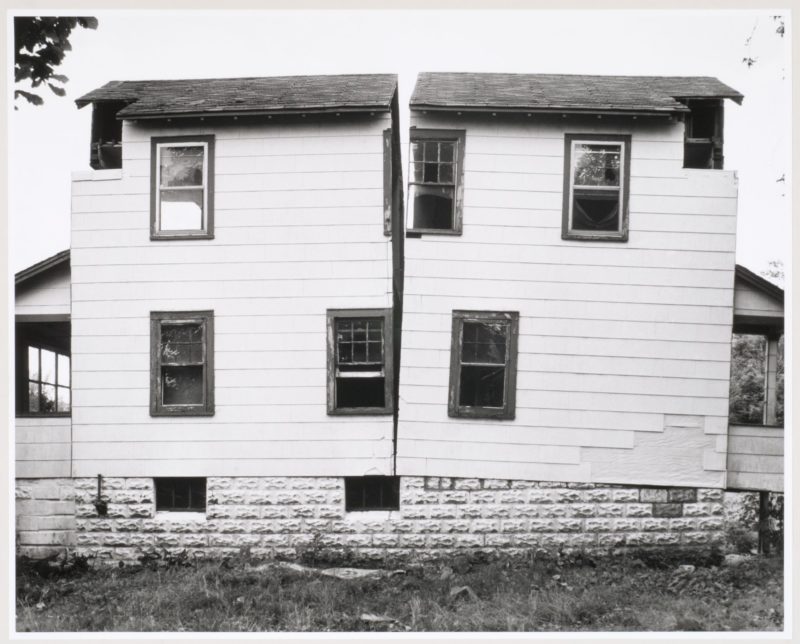Investing In A Property With A Friend/Family? Here’s How To Choose Between Joint Tenancy And Tenancy-in-common

Get The Property Insights Serious Buyers Read First: Join 50,000+ readers who rely on our weekly breakdowns of Singapore’s property market.
A seasoned content strategist with over 17 years in the real estate and financial journalism sectors, Ryan has built a reputation for transforming complex industry jargon into accessible knowledge. With a track record of writing and editing for leading financial platforms and publications, Ryan's expertise has been recognised across various media outlets. His role as a former content editor for 99.co and a co-host for CNA 938's Open House programme underscores his commitment to providing valuable insights into the property market.
Perhaps you’ve bought a property with a sibling or friend, instead of your spouse. Or maybe you have aspirations toward owning a second property later, under your spouse’s sole name. In these situations, it pays to be forward-looking: owning your property as tenants-in-common is sometimes the smarter choice. Here’s what you need to know about the two manners of holding:
Caveat:
This is a simplified explanation that shouldn’t be construed as actual legal advice. If you have concerns over your manner of holding, always consult a conveyancing lawyer; there are specifics and nuances to every case that could make them different. You can contact us, and we’ll put you in touch with the right professionals.
When is the manner of holding decided?
The question of joint tenancy versus tenancy-in-common applies when there is more than one owner of a property or land plot. Your chosen manner of holding must be made at the point of purchase, after which it’s lodged with the Singapore Land Authority (SLA) registry.
The manner of holding will determine a range of important factors, such as how the property or land is inherited, and how ownership of the property is transferred.

What is joint tenancy?
A joint tenancy has two important features:
- Absence of shares
- Right of survivorship
Absence of shares
A joint tenancy means undifferentiated ownership of the property. All the co-owners are treated as if they were effectively the same entity, and there are no clearly defined shares of the property.
For example, if you have joint tenancy of your condo with your spouse and an in-law, then all three of you have equal ownership – none of you own any specific “percentage” or part of the condo. In the case of land ownership, no co-owner can define any specific part of the land plot as being “theirs”.
As ownership is undifferentiated, any decisions involving the property – such as its transfer – requires all the co-owners to act in concert.
In the above example, say you and your spouse both agree to sell the property, but your in-law does not consent. In such an event, it likely wouldn’t matter that it’s “two against one”. You probably can’t sell the property without your in-law’s approval.
(Exceptions may exist, but you’ll have to consult a conveyancing lawyer).
Right of survivorship
Under a joint tenancy, the right of survivorship applies. This means that, if one of the owners passes away, the other co-owners automatically inherit the property.
Note that this happens even if you have a will stating otherwise. E.g. if you will your condo to your eldest child, but have joint tenancy with your spouse, then your condo goes to your spouse when you die.
Also, because all the co-owners are effectively treated as being the same entity, they’re holding on to the same deed / title. This means there’s no estate duty payable, when the property is transferred to the co-owners upon your death.
Why use a joint tenancy?
For most family home owners, a joint tenancy is the “default” choice. This ensures that your co-owner(s), who are most likely family members, will hold on to the property when you pass on.
In addition, a joint tenancy ensures all co-owners are on an equal footing, regardless of how much they actually contributed. This is a double-edged sword, however. It also means that a co-owner who puts much less into the property has the same level of ownership as you. E.g. if you paid for 90 per cent of the property, and your co-owner paid for 10 per cent, you both still own it equally.

What is tenancy-in-common?
Tenancy-in-common is more popularly used for investment properties and commercial properties. With this manner of holding, each co-owner has a separate and defined share of the property.
For example, you could specify that you own 99 per cent of the property, while your spouse owns one per cent (we explain more on why you’d do that below). In the case of a land plot, co-owners can actually specify which parts of the plot they own.
A key difference is that, upon your death, your share of the property will be distributed according to your will. If you own 99 per cent of the property, and you will it to your child, then your child will inherit your 99 per cent.
Unlike a joint tenancy however, there will likely be estate duties incurred, when your share is transferred to beneficiaries.
Another key difference is that no co-owners can sell their share to whoever they want, whenever they want. If you have a business partner who owns 50 per cent of your investment property, and she sells her half to another buyer, you’ll end up being co-owners with the new buyer. You don’t have any control over this.
That said, tenancy-in-common does not mean the biggest shareholder “controls” the whole property
For tenants-in-common, shares in the property don’t work the same way as, say, a controlling interest in a company.
Even if you own the largest share, you cannot kick another co-owner out of the house. Decisions such as whether to rent out the property, or tear down and rebuild it, must also be jointly made by all co-owners. Even if a co-owner has just one per cent share, they can still block the decision.
Likewise, you cannot make a unilateral decision to sell the entire property, just because you own more of it. Even if you own 99 per cent of the property, you can only sell your 99 per cent share; not the entire unit.
Why use tenancy-in-common?
The first and most obvious reason is when the interest is purely commercial; such as if you and some business partners pool your money to buy a penthouse for investment.
A second reason is when – due to personal reasons – you want to ensure your share of the property goes to a specific party, and not your co-owners by default. For example, you can will your share to a parent, so it goes to them instead of a spouse, child, etc. (this may be done to ensure elderly parents cannot be kicked out of the house, upon the co-owner’s death).
A third reason is – to put it bluntly – avoiding Additional Buyers Stamp Duty (ABSD).
How does tenancy-in-common help to avoid ABSD?
For Singapore Citizens, the ABSD applies on the second and subsequent properties; there’s no ABSD on your first home.
So say you own one per cent of your existing condo unit, and your spouse owns 99 per cent. You could transfer your one per cent to your spouse, after which you own zero properties.
You can then purchase your “first” property without incurring ABSD, and also with full financing from the bank (you’re usually able to borrow less if you have a property with an outstanding mortgage).
In this way, each spouse ends up with one property under their name, and the family has two properties – all without paying ABSD.
(This assumes, of course, that you have the funds and income necessary to take on a separate mortgage).
Do note that this can only work for private properties, as you cannot decouple an HDB.
Why split the property 99-1?
This is not necessary, but is commonly used by owners aiming to buy a second property. This is because, when you transfer your share of the property, the Buyers Stamp Duty (BSD) is payable on the share of the property.
So if you transfer 50 per cent of a $1 million property, the BSD will be based on $500,000. This incurs a stamp duty of $24,600.
If you transfer just one per cent of a $1 million property, the property will be based on $10,000. This is a stamp duty of $100.
(Check out this article on how BSD is calculated).
Please consult a lawyer before you attempt any of this
There are many potential complications that can happen– such as if the person holding the one per cent actually paid for half the property (this can result in serious financial damage in events such as divorce); and that’s just one example.
Also, unless the tenancy-in-common is held in a 50-50 split, it won’t be possible to convert it to a joint tenancy later (see below).
So if you intend to use tenancy-in-common because you want two properties later, speak to a lawyer first; or contact us so we can find you one.
Your decision on the manner of holding can sometimes be changed later
If you are tenants-in-common and both own 50 per cent, you can approach a law firm to convert this to a joint tenancy.
You can also convert a joint tenancy to tenancy-in-common; but you must convert to an arrangement with equal shares (so if there are two of you, it must become 50-50 and not 99-1).
You will also need the permission of your lender, if there’s a mortgage on the property. Your bank or financial institution can refuse to permit the conversion. In such a situation, you may have to pay off the outstanding loan before you can proceed.
For public housing, you will need HDB’s special approval (it will be reviewed on a case-by-case basis, but we can tell you the chances of success are low).

Finally, note that your manner of holding has no bearing on your mortgage
Whether you are tenants in common or joint tenants, all co-owners are equally responsible for the mortgage (there is joint liability). Should you pass on, your co-owners are still responsible for paying the mortgage; otherwise the property can still be taken from all of them via foreclosure.
So please get proper mortgage insurance, regardless of your manner of holding. This will pay off the outstanding home loan in the event of death.
For more information on property ownership in Singapore, as well as news updates, follow us on Stacked. We’ll keep you up to date on the latest issues involving the Singapore private property market.
At Stacked, we like to look beyond the headlines and surface-level numbers, and focus on how things play out in the real world.
If you’d like to discuss how this applies to your own circumstances, you can reach out for a one-to-one consultation here.
And if you simply have a question or want to share a thought, feel free to write to us at stories@stackedhomes.com — we read every message.
Ryan J. Ong
A seasoned content strategist with over 17 years in the real estate and financial journalism sectors, Ryan has built a reputation for transforming complex industry jargon into accessible knowledge. With a track record of writing and editing for leading financial platforms and publications, Ryan's expertise has been recognised across various media outlets. His role as a former content editor for 99.co and a co-host for CNA 938's Open House programme underscores his commitment to providing valuable insights into the property market.Read next from Property Advice

Property Advice We’re In Our 50s And Own An Ageing Leasehold Condo And HDB Flat: Is Keeping Both A Mistake?

Property Advice Should We Buy An Old 99-Year Leasehold Condo To Live In: Will It’s Value Fall When The Lease Runs Out?

Property Advice We Own A $800K 1-Bedder And A $1.1M 3-Bedder: Is It Possible To Upgrade To A 4-Bedder Condo?

Property Advice I Own A 55-Year-Old HDB Flat, But May Have To Sell — Can I Realistically Buy A Freehold Condo With $700K?
Latest Posts

Pro How A 625-Unit Heartland Condo Launched In 2006 Became One Of 2025’s Top Performers

Property Investment Insights Does Buying A One-Bedroom Condo Still Make Sense As An Investment In 2026

Property Market Commentary Why This Once-Ulu Town In Singapore Is Going To Change (In A Big Way)

Editor's Pick This HDB Just Crossed $1.3M For The First Time — In An Unexpected Area

Singapore Property News “I Never Thought I’d Be Sued by a Tenant.” What Long-Time Landlords in Singapore Miss

Editor's Pick I Lived In Bayshore When It Was ‘Ulu’. Here’s How Much It Has Changed

Editor's Pick HDB Resale Prices Finally Slowed in 2025 — Will It Continue in 2026?

Singapore Property News Breaking News: District 23 Condo Sells Out In Under Two Years At $2,120 Psf Average

On The Market Here Are The Cheapest 3-Bedroom Condos in Central Singapore You Can Still Buy From $1.15M

Property Market Commentary Why The Singapore Property Market Will Be Different In 2026 — And It’s Not Just About Prices

Editor's Pick 2025 Year-End Review Of The Singapore Property Market: What The Numbers Reveal

Pro This 21-Year-Old Condo Didn’t Sell Out Initially, Yet Became A Top Performer

Editor's Pick How The HDB Resale Market Performed In 2025, And What It Means For 2026 Prices

Editor's Pick 4 Key Trends Reshaping Singapore’s New Launch Condo Market In 2026

Editor's Pick What I Only Learned After My First Year Of Homeownership In Singapore




How can I check if my current arrangement is joint tenancy or tenancy in common? Is there a place I can check apart from law firm?
In Joint tenancy, if one owner does not agree to rent a room in a HDB flat can the other owner still proceed to rent without the other owner’s permission?